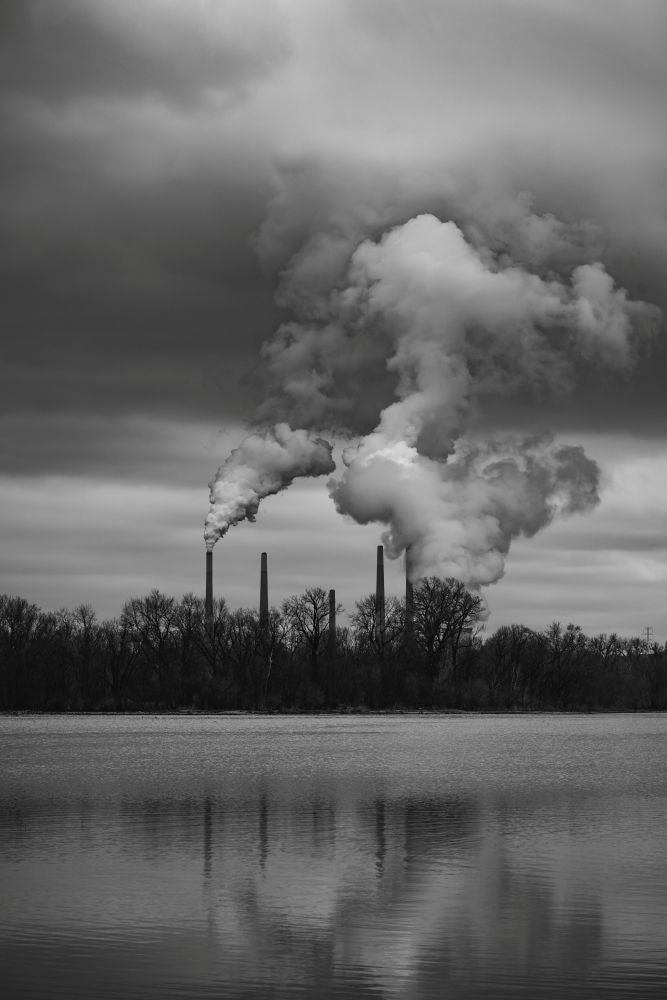How 70,000 people stopped “smoking” overnight

We’ve heard for years about “blue zones” where residents routinely live long, healthy lives, many living to be over 100 years old. The five established blue zones are Okinawa, Japan; Sardinia, Italy; the Nicoya Peninsula, Costa Rica; Ikaria, Greece; and Loma Linda, California, USA. Scientists have intensely studied the environment, foods and lifestyle of these areas and its residents to glean actionable “secrets” for the rest of us.
The majority of the world obviously does not get to live in a blue zone, and sometimes we also get a glimpse of where not to live. One such example came up recently from a study on what happened when a coal-processing plant closed down. The Shenango, Inc. plant, located on an island in the middle of the Ohio River in Allegheny County, was closed on 7 January 2016 after 54 years of operation. The study period for the evaluation of the air quality and cardiovascular health effects covered the three years before, and three years after, the shutdown, from 2013 to 2018. Results showed a 42% drop in cardiovascular emergency department visits in the surrounding community compared with the preclosure average number of heart-related visits (see the light blue line, trending up on the left side, and the red line, trending down on the right). (An interrupted time series analysis of the cardiovascular health benefits of a coal coking operation closure)

Here’s why the shutdown affected nearby residents so much. Pittsburgh is known as a steel industry area (hence the “Pittsburgh Steelers”), and steel production requires a vast amount of high-energy fuel to convert iron ore into steel. The plant that shut down was a “refinery” for one of these high-energy fuels, which is coke. Coke is made by crushing coal to increase its surface area, then “baking” it with high temperatures and pressures in the absence of oxygen to remove the impurities. The impurities are released in liquid and gas forms as the coal is transformed into coke, and these streams are supposedly captured and further refined to be used as other types of fuels. However, this particular coke factory regularly exceeded allowable pollution limits, according to GASP, Group Against Smog and Pollution. During the summer of 2015, Shenango lost power at least four times, disabling its pollution controls, and creating particularly egregious air pollution episodes in the area. If you want to know what it was like for residents around the coke plant before and after its closure, we encourage you to read this article. (A Change in Air Quality After the Closure of the Shenango Coke Plant)
Coke manufacturing releases many of the same types of pollution as coal-burning plants power plants, such as PM2.5, so this type of pollution can be occuring in other places where coal-burning power plants exist. Coke plants additionally emit high levels of sulfur dioxide.
Using local air quality monitoring data, the study’s author Wuyue Yu, a doctoral candidate at New York University Grossman School of Medicine in New York City, found a 90% drop in sulfur dioxide levels after the plant closed and a more modest, but still significant, decrease in sulfate ultrafine particles from 2.22 to 1.32 μg·m−3, and a 1.29 to 0.44 ng·m−3 decrease in arsenic. “The ultra-fine particles that are released from coal-coke plants go deeper in the lungs and could circulate to the heart and potentially cross the blood-brain barrier,” Yu said. (Closure of Coal-Burning Plant in Pittsburgh Linked to Big Reductions in Heart-Related Emergency Department Visits and Hospitalizations)
Coal-related air pollution can cause oxidative stress, inflammation, and systemic health effects, increasing cardiovascular health risk, so the shutdown of the coking plant most likely reduced both acute and chronic inflammation among nearby residents. The immediate and longer-term benefits from this significant drop in air pollution exposure mimic the benefits that have similarly been found over time following quitting smoking. It’s quite amazing to consider that the closure of one plant was similar to enabling 70,000 people to “stop smoking” overnight!
This event brings to mind a few logical questions:
-
Is coke the only fuel that can be used to make steel? No. While using coke in the steelmaking process is traditional, there are other, more modern means of making steel that use a coke-free or low-coke process, such as electricity, natural gas or hydrogen. (What is a coke-making plant and what is its role in the steelmaking process? Here's what to know) However, 71% of global steel is made with coal, and most steel production in the US still relies on coke (coal in essence). The reason we keep using coal to make steel, using a process that hasn’t fundamentally changed in more than 100 years, is simple: it’s cheap if you don’t consider the pollution side effects. (Do we really need coal to make steel?)
-
Why did it take this long to release the study, since the observation period supposedly closed at the end of 2018? That’s not clear, and the news effect of the closure seemed to be local. Were the results delayed for any political reasons? It’s hard to know…but knowing the air around a coke plant could give you a heart attack is pretty important information, despite assurances by industry or government. We’ve been here before with cases of lead in drinking water, chemical spills, etc.
Whenever your gut or your environment says “somethings not right” in the air around your home, it’s best to do your own research. Do you feel better when you travel elsewhere? Does the mysterious “dust” return repeatedly despite how often you clean, or the cough persist even in nice weather with no known illness? Chances are, something is not normal, and air quality testing could diagnose the problem. Talking with neighbors and friends could also confirm that it’s not confined to your home. There is strength in numbers, so encourage others to speak up and not to lose hope, like the citizens of Allegheny County did.
Photo by Mike Marrah on Unsplash






